Alaska Dip Netting
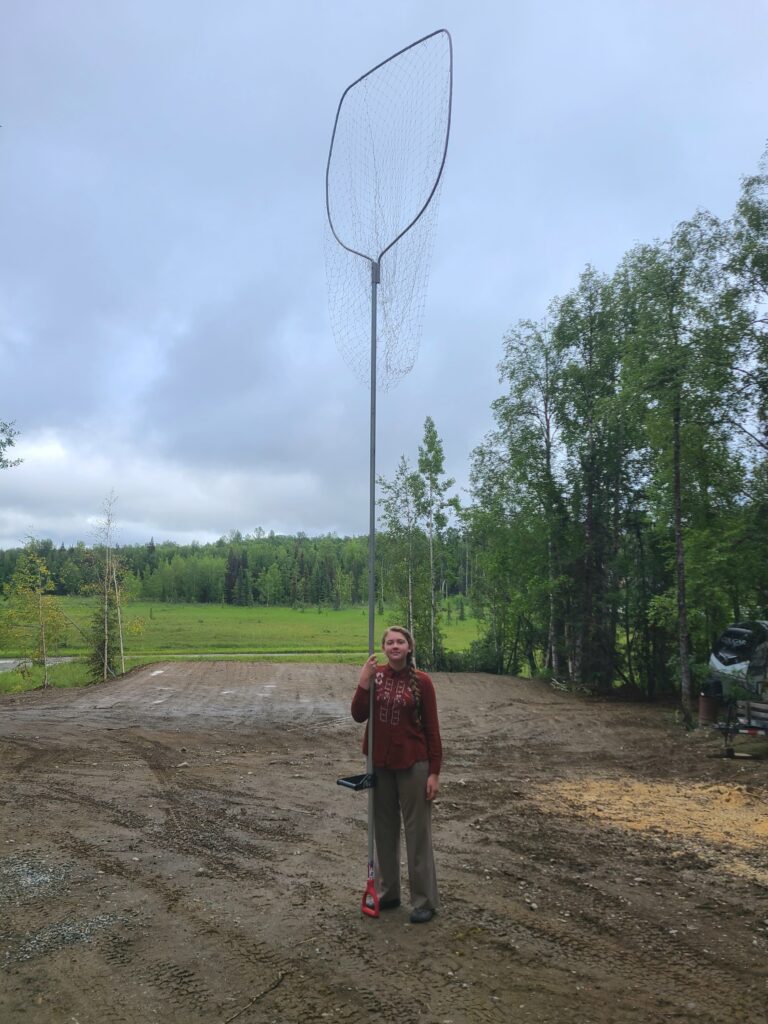
We are blessed to live in Alaska, which allows a lot of subsistence opportunities for its residents. You have to be a resident for many of these subsistence opportunities so that cuts down the risk of overharvesting by eliminating the out of state people. Hunting and fishing licenses are inexpensive for residents so that helps to make sure all the residents that want to go have a chance to do so. Fish and wild game meat are also much healthier and you don’t have to worry about what preservatives are in it as it is all natural.
Residents are allowed to dip net salmon out of certain streams and rivers to gather subsistence meat. It requires a free license and the number of fish that you can catch is determined by how many people are in your household. The number of days changes every year, and some areas get extended after they open so you have to have a flexible schedule, just like when you are planning to do anything else in Alaska.
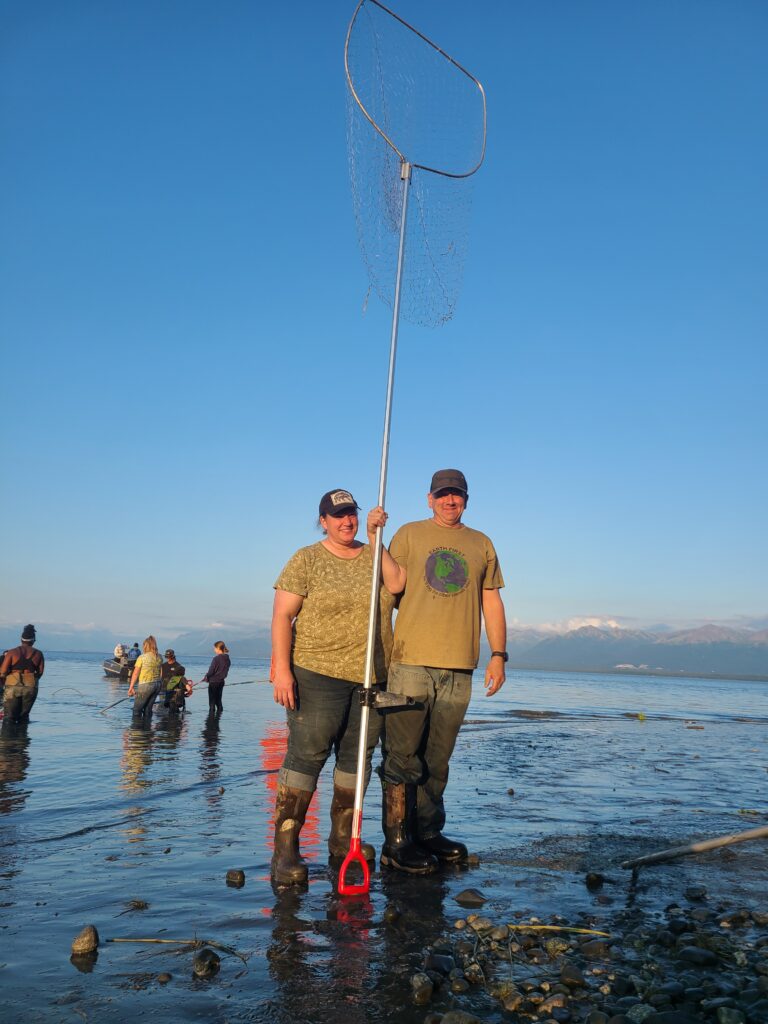
The process is fairly simple and finding a dip net is the hardest part if the season is near. The net is basically a big monofilament fish landing net with a really long handle. Handle extensions are a “Must have” for many areas so you can reach down a bank or further out into the river. We had to borrow a net from some of our other friends this time, but we have since bought one that is capable of being extended out to forty-feet. We will be able to really reach out next time. The net is placed on its side in the channel with the top at the water’s surface. Tying an empty milk jug onto the net frame will make life a lot easier as it won’t work as hard while holding the net.
Having two or more people makes the whole process easier as the person dip netting can pass the net to the other person to deal with the fish as they are caught. They quickly pull the fish out of the net and pass the dip net back, so the net gets back in the water fast. Once the dip net is passed back the second person can then whack the fish in the head and take care of it. Everyone has to be listed on the subsistence permit that may be handling a fish, so I listed all three of us.
Our friends Ryan and Angela planned on heading to Fish Creek for the final day of dip netting, so we joined them. Jessica ended up getting sick so she couldn’t help us. Fish Creek is southwest of Wasilla off of the Knik-Goose Bay Road. It empties into the Knik Arm, which is the upper part of the Cook Inlet. We went to the mouth of the creek and waited for the tide change. The weather was warm and sunny, so the views were amazing. We had some time to kill so we walked around for a while and got some pictures. We could see the water boiling with salmon waiting for the tide change so they could go up the creek.


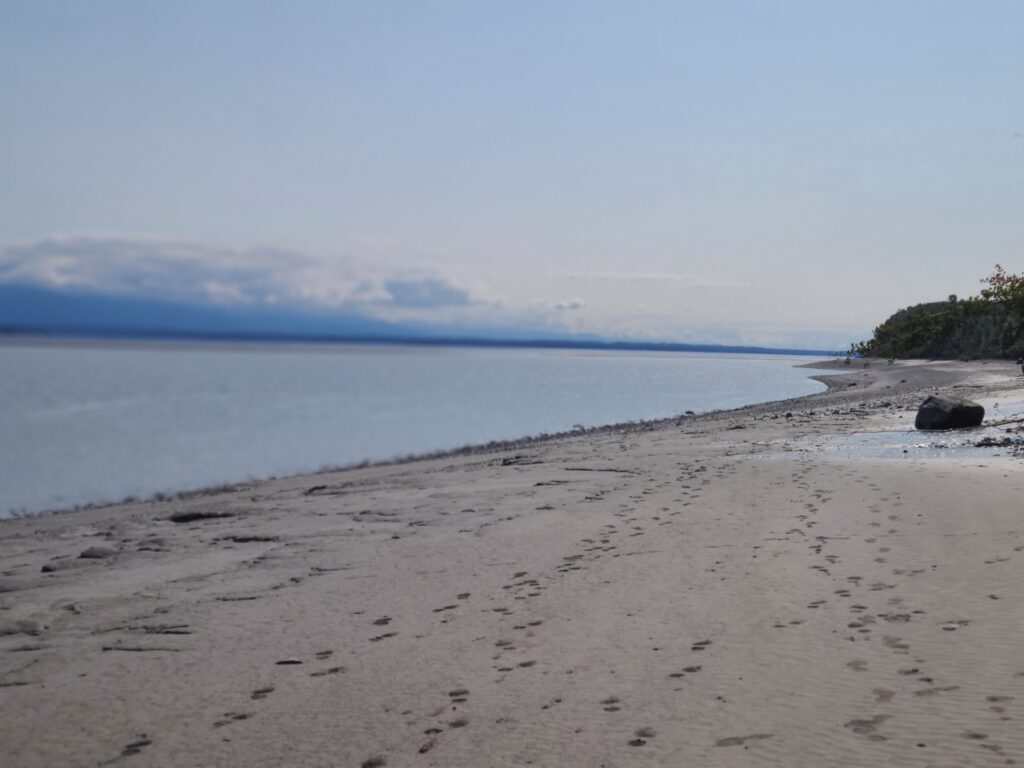
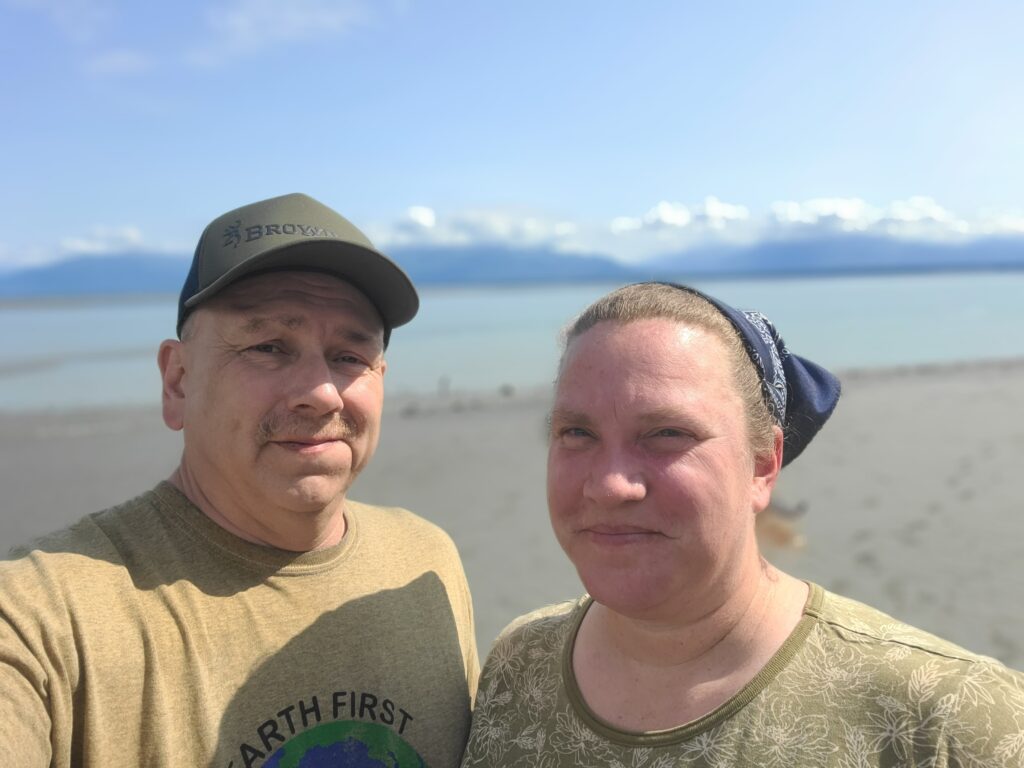
Tide changes are extreme in Alaska and the Fish Creek area is no exception. Having the tide level rise over twenty-seven feet within a couple of hours is common so you have to know the tides if you are exploring the beaches. Each year many people have to be rescued and several die when they become stuck in the tidal mud flats and drown during the incoming tide. Alaska is beautiful, but it will kill you quickly if you’re not prepared and careful. The incoming tide change is usually marked by a tidal bore wave. It is a large wave, and some daring surfers will actually ride it for miles. Once the wave comes in the water level keeps rising fast and doesn’t stop. Within an hour and a half, the level rose nearly thirty feet where we were at Fish Creek. It also flooded the trail so keep in mind that you will be trapped for a while when you are in these areas.
The fish started rolling in as soon as the water level rose and it was fishing time! We started catching Alaskan Red Salmon (Sockeye salmon) immediately. We would pull the nets in and the ladies would take the fish out and throw the nets back to us to repeat the cycle. They whacked the fish in the head and started piling them up so all of us would have some delicious dinners later. We got a few Silvers (Coho salmon) too and they are also good eating. Reds are by far the best, but a fresh Silver is our second favorite. We started dip netting about twenty-five feet down the bank and had to move up the bank about every five minutes as the water rose quickly. Eventually we reached the top of the bank and just stayed there are the water level went over the top of our boots. It was warm out, so it wasn’t bad at all.
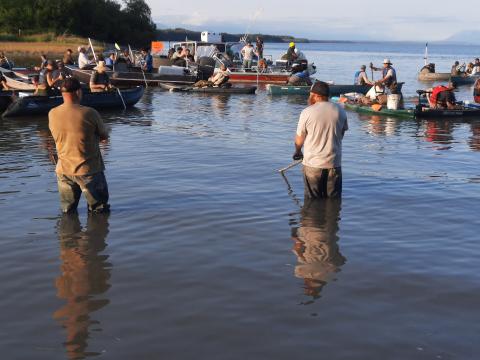
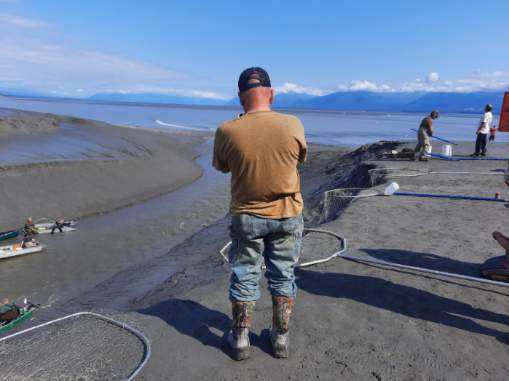
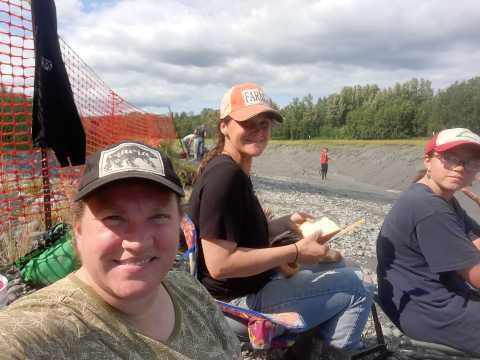
It started getting crowded at the tide change time as it was the last day for everyone to go dip netting. Everyone stayed in their spots and you could watch one person lose a fish and watch it swim into another net. Both of us donated a few fish to the neighboring fishermen too so it happens. Everyone was good sports about and it wasn’t the typical “Combat” fishing like you’d see in the lower 48.
We got the fish that we needed to fill our freezer space and called it good. Packing all those fish back to the truck is the unseen hard work that is involved. All those fish started feeling mighty heavy quickly as you start walking back out on the trail. Packing a large dip net and handles has its challenges too, but as long as you want out for limbs it is OK. We put the fish on ice in the cooler and headed home.
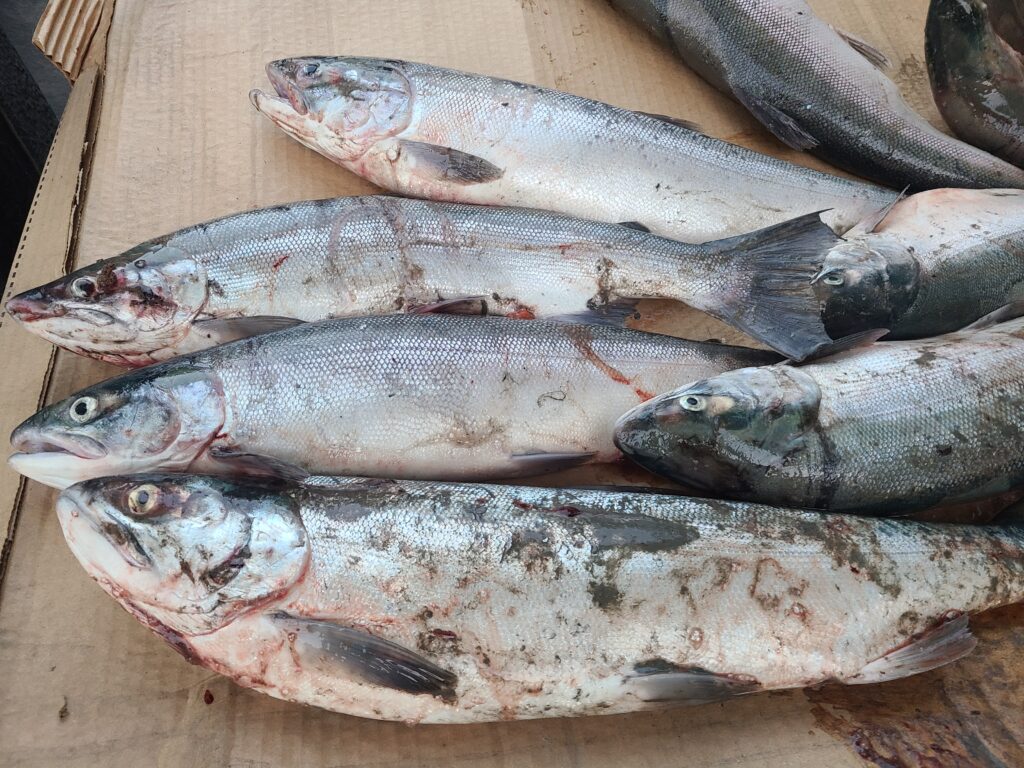
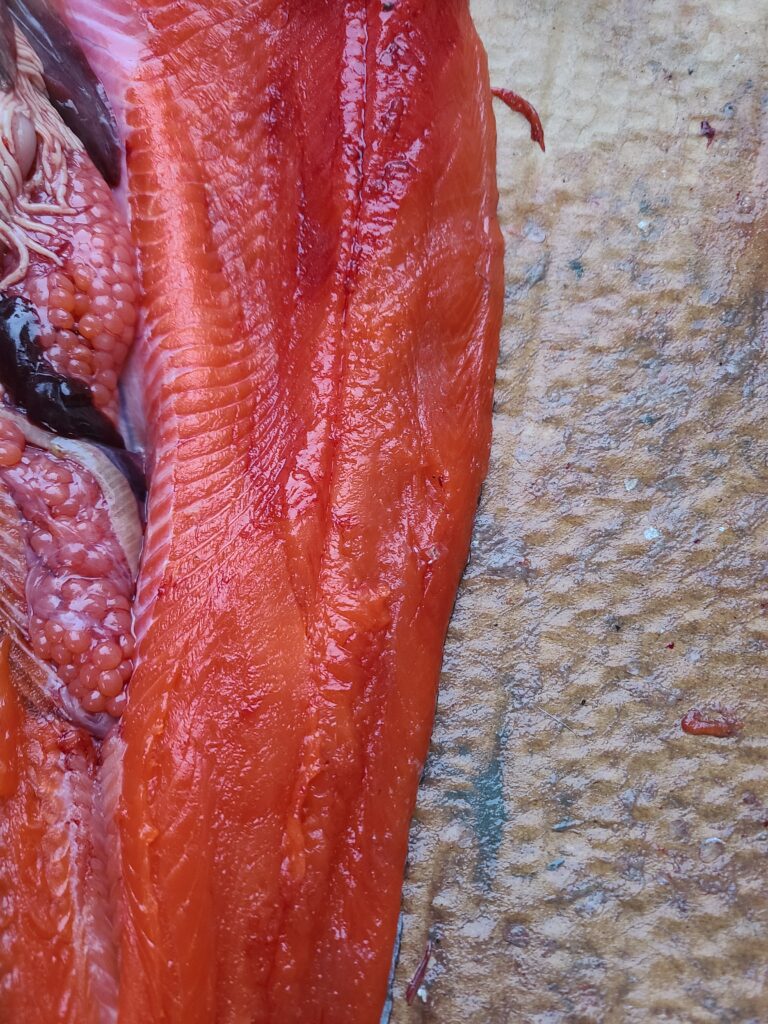
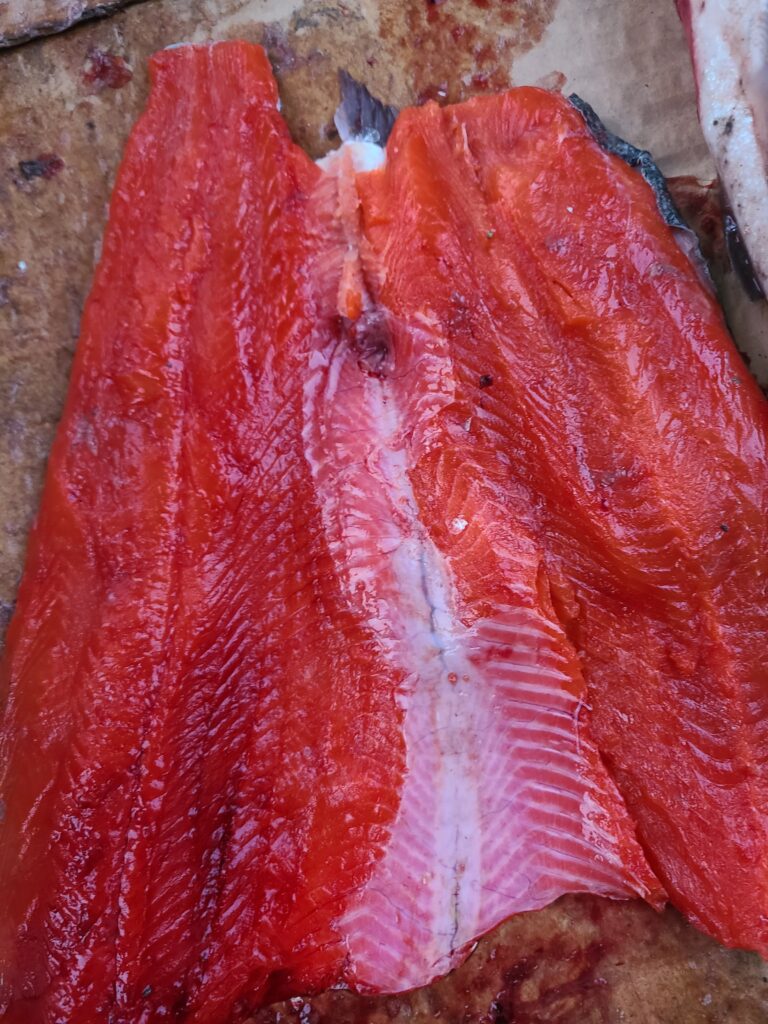
Once we got home more behind-the-scenes work started, filleting all those fish. Luckily, I have had plenty of experience in the past, so it went relatively quickly. Rinsing them was the hardest part as we can’t use our well water on any food or for drinking as it isn’t safe for anything besides washing and flushing. We have to pack our drinking water in until we get a new well in the summer of 2024. Indian Health approved installing a new well for us, but not until the following year after the ground thaws out. We vacuum packed and fresh froze all the fillets that we didn’t plan on eating over the next few days. Overall, it was a fun, but tiring, day and we were able to get stocked up on Reds for the winter making it all worthwhile.